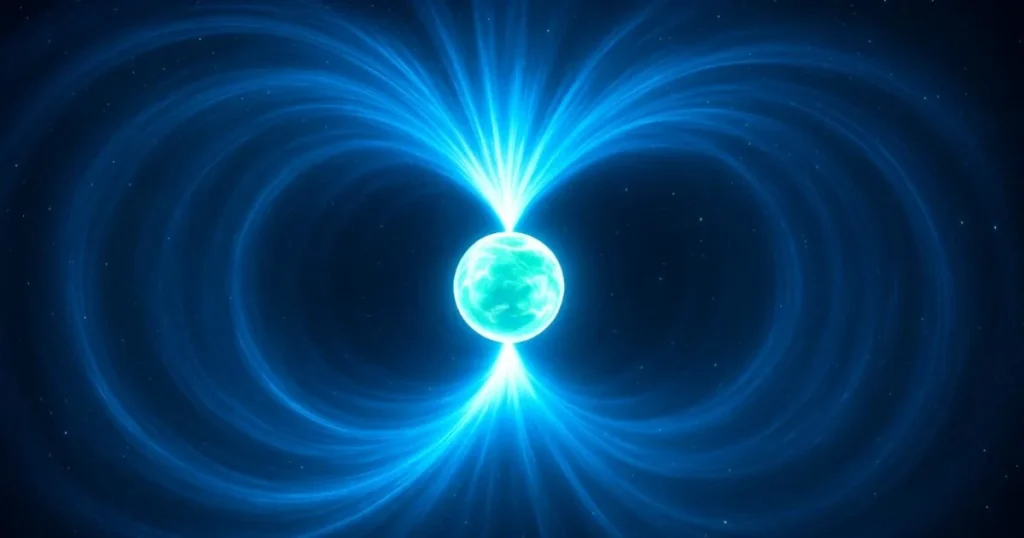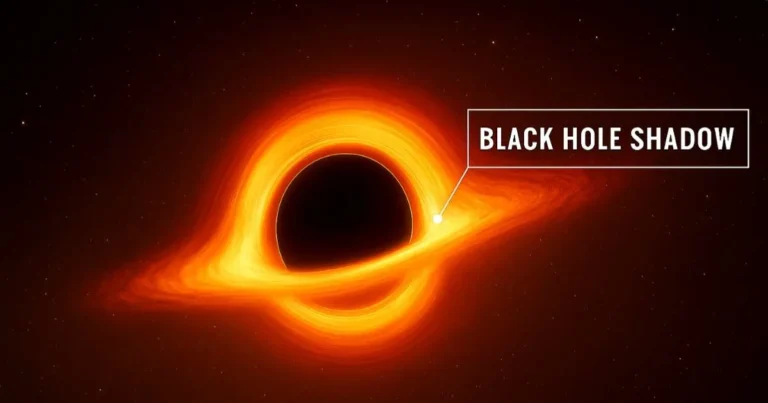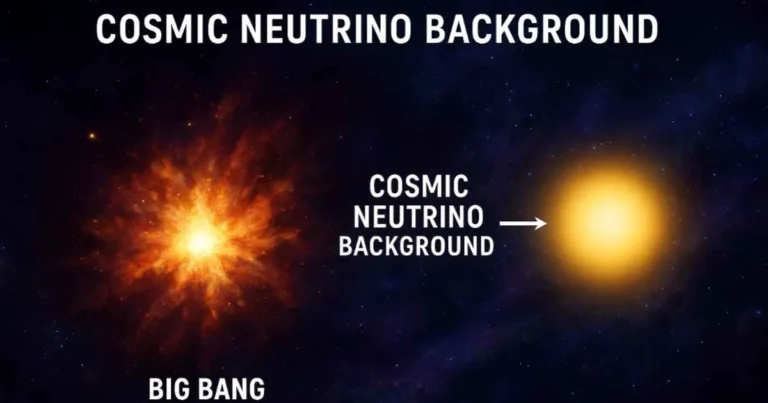Magnetar: The Universe’s Most Extreme Magnetic Monster

Tags:
- Magnetar
- What Is Series
Magnetars are arguably among the most bizarre and powerful entities in the universe: neutron stars with such intense magnetic fields that they could erase your credit cards from halfway across the Moon. Let’s begin unraveling what magnetars are, how they form, and why their wild cosmic behavior continues to leave astronomers speechless.
What Is a Magnetar?
When a massive star dies in a supernova explosion, it leaves behind a dense remnant, a Neutron Star. But in some rare cases, nature dials up the intensity to the maximum. The result? A Magnetar, it is a type of neutron star with a magnetic field a trillion times stronger than Earth’s.
To put it simply: if you were standing anywhere near one, your atoms wouldn’t even hold together.
The term magnetar sounds almost like science fiction, yet these objects are very real. They are cosmic dynamos that twist spacetime, emit intense X-rays, and occasionally unleash bursts so powerful they can be detected across galaxies.
The Birth of this Cosmic Magnetic Beast
So, how does something so extreme even come into existence? When a massive star (at least 10–25 times the mass of the Sun) collapses under its own gravity, its core compresses into an incredibly small space, a sphere just about 20 kilometers wide. The rotation and magnetic properties of this remnant amplify drastically during the collapse.
If the conditions are just right, this amplification turns the star into a Magnetar, a cosmic powerhouse spinning several times per second with an unimaginably strong magnetic field.
It’s the magnetic field, not gravity, that defines a magnetar’s personality. The field lines twist and snap, releasing massive amounts of energy, the source of their infamous gamma-ray and X-ray flares.
The Magnetic Field That Defies Physics
A magnetar’s magnetic field can reach 10¹⁵ gauss. For comparison, Earth’s magnetic field is about 0.5 gauss, and even the strongest man-made magnets barely touch 100,000 gauss.
That translates to a magnetar’s magnetic field being quadrillion times more powerful than Earth’s.
If it existed somewhere close to us, such a magnetic field would literally warp atomic structures into twisted, freakish shapes that convert normal matter into weird, elongated shapes. That’s one of the reasons magnetars are commonly referred to as “cosmic magnetic monsters”, they exist in a physics regime that Earth-based labs can only hope to mimic.
Flares, Outbursts, and Space Quakes
Magnetars are unpredictable. They stay quiet for years, then suddenly erupt with violent outbursts of X-rays and gamma rays.
In 2004, a magnetar named SGR 1806–20 emitted a flare so powerful that it momentarily disturbed Earth’s ionosphere, even though it was 50,000 light-years away, mind bending, right?
Astronomers believe these eruptions come from “starquakes”, sudden shifts in the magnetar’s crust caused by the immense stress from its magnetic field. Think of it as an earthquake, but in a neutron star where the “ground” is nuclear matter.
These flares can release more energy in a fraction of a second than the Sun does in 100,000 years.
That’s not an exaggeration, that’s astrophysical fact.
What Makes Magnetars So Special?
Unlike regular neutron stars or pulsars, magnetars emit high-energy radiation not from rotational energy, but from magnetic decay. This magnetic energy slowly weakens over thousands of years, releasing bursts, flares, and persistent X-ray emissions along the way.
Because of this, magnetars are very rare, only around 30 confirmed magnetars are known in our galaxy. Yet, their influence is huge. They help scientists:
- Study nuclear matter at extreme densities.
- Understand gamma-ray bursts (GRBs), which some magnetars are suspected of powering.
- Explore the link between magnetars and fast radio bursts (FRBs), those mysterious cosmic signals that flash for milliseconds.
The Connection Between Magnetars and Other Cosmic Phenomena
Magnetars don’t exist in isolation. They’re part of a much larger cosmic story.
For example, when astronomers talk about quasi-stellar objects, they’re exploring another type of high-energy object powered by gravity and radiation. But while quasars dominate at the scale of galaxies, magnetars rule the realm of collapsed stars.
Magnetars also tie into the mystery of gravitational lensing, discussed in one of our blog post Gravitational Lensing: The Astonishing Cosmic Magnifier. Their intense magnetic and gravitational fields could theoretically distort light paths, just like massive galaxies do.
And when it comes to cosmic relics like neutrinos, magnetars might even contribute to the high-energy particle background of the universe, linking to Cosmic Neutrino Background: The Ghostly Relic of the Big Bang.
Could a Magnetar Ever Threaten Earth?
The short answer to this is a big No, it’s good that they’re light years away from us.
Even though a magnetar could destroy our planet if it appeared within a few light-years, the nearest known one is safely over 9,000 light-years away.
Still, the thought experiment is fascinating. If a magnetar’s flare ever hit Earth directly from that close, our atmosphere would be stripped, electronics fried, and life, well, it wouldn’t go on as usual.
But no need to worry, space is big, and we’re in no immediate danger.
The Future of Magnetar Research
At the current time, Astronomers utilize next-generation telescopes like JWST (James Webb Space Telescope) and NICER (Neutron star Interior Composition Explorer) in order to unravel the mysteries of magnetar origin and its connection to superluminous supernovae and fast radio bursts (FRBs).
One intriguing theory is that newborn magnetars might even power some of the most energetic supernova explosions ever observed by astronomers, by channeling magnetic energy into the expanding debris.
In the next decade, magnetars can help us probe the limits of known physics, from quantum electrodynamics in strong fields to what spacetime is. They remind us that the cosmos isn’t just pretty and fascinating, it’s brutally strong.
Conclusion: The Magnetic Heart of the Cosmos
Magnetars are like the universe’s warning label, proof that nature doesn’t mess around when it comes to extremes. They show us how magnetic energy, gravity, and nuclear matter can combine to create phenomena that seem almost supernatural.
If black holes represent gravity’s ultimate expression, magnetars represent magnetism’s. Both challenge our understanding of the cosmos, and both keep us staring up, wondering what other impossible things might still be out there.
Comments
Please log in to leave a comment.
Related Posts

What Is a Black Hole Shadow? The Ultimate Glimpse into the Abyss
If you could stare into the heart of a galaxy, past the light, past the stars, and into pure darkness, what would you actually see? When astronomers talk about the black hole shadow, they’re referring to one of the most mind-bending sights in the universe, the silhouette of the unseeable, the faint outline of where […]

White Holes: The Universe’s Reverse Gear
If we were to rank the theories that have changed human history forever, the General Theory of Relativity would be at the top. The results it reveals are beyond human understanding. They show that the cosmos is filled with perplexing phenomena, some of which are purely hypothetical yet mathematically elegant. One such phenomenon is the […]

Cosmic Neutrino Background: The Ghostly Relic of the Big Bang
The Cosmic Neutrino Background is the ghostly radiation from the Big Bang’s first second. Undetected yet essential, it holds secrets about neutrino mass, dark matter, and the universe’s origin story. Here’s why scientists are chasing this invisible relic.